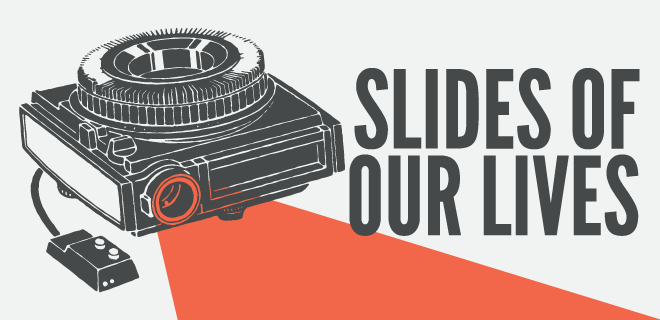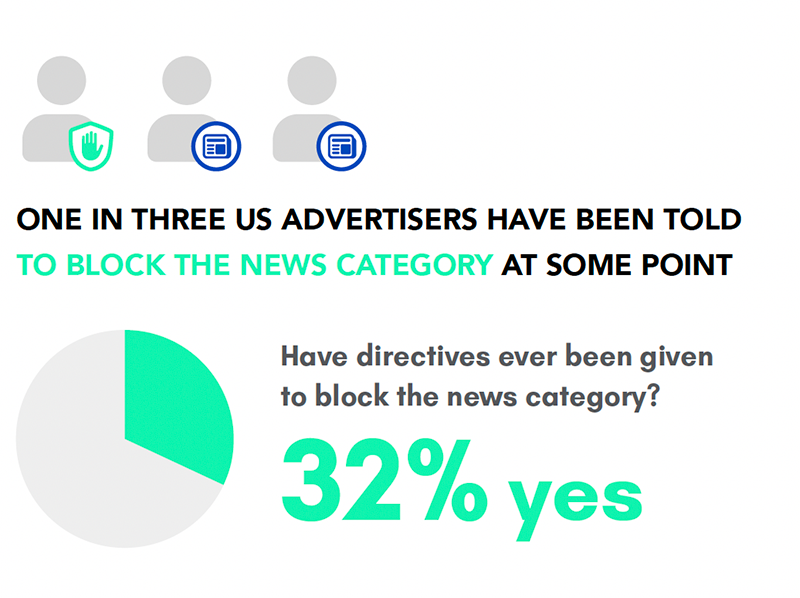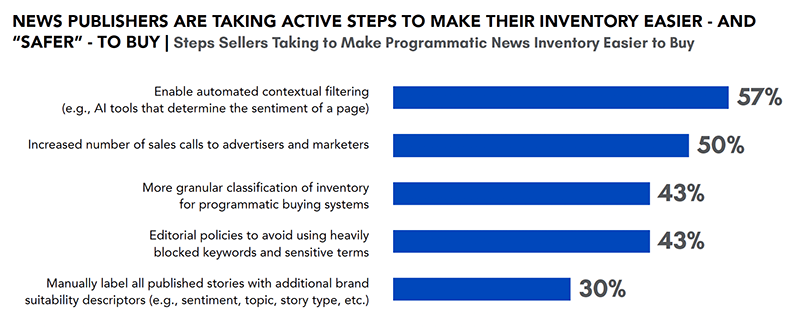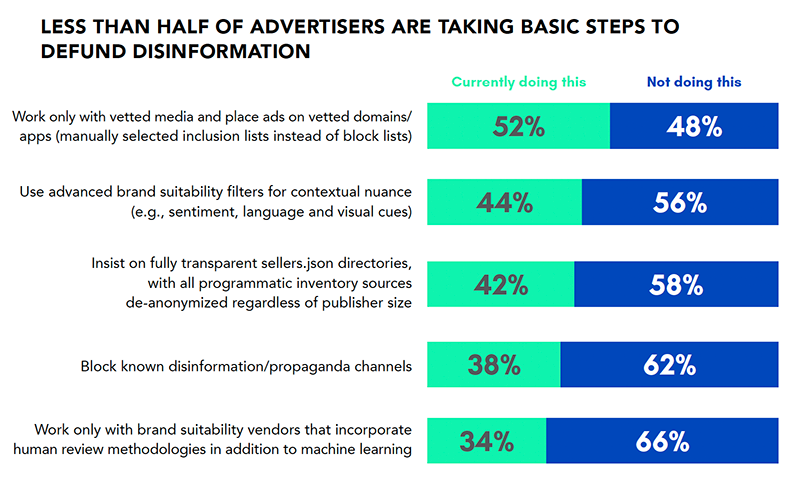
For far too long, the advertising ecosystem has known that news publishers are major causalities in the war against disinformation. Now, there are some statistics to back that up. Still, most advertisers agree they have a responsibility to support legit news sources.
With the move away from direct sales to a mostly programmatic ecosystem, it’s been a hard road for premium news publishers these past few years. From pandemic revenue and personnel losses, to big tech devaluing news, to brand safety blocklists and the MFA site reformation blocking revenue, to hedge funds gutting local newsrooms, to copyright battles with generative AI, it hasn’t been an easy journey.
News is important. It provides education to the public about the world and local events. Brands aligned with quality and responsible news outlets are viewed positively by the public. That audience is highly educated, affluent, and influential. And yet, news publishers receive less and less ad spend. Why is that happening and what can the industry do about it?
Prohaska Consulting is bringing together leading publishers, including The E.W. Scripps Company, Magnite, Newsbreak, Outbrain, and The Daily Voice, along with technology partners, media buyers, and advertisers to identify and solve challenges associated with advertising on news properties. The “Rebranding of News Initiative,” seeks to demonstrate “the unique value that independent news brings to the advertising ecosystem and the vital quality of news audiences.”
As a first step, Prohaska teamed up with Advertiser Perceptions and surveyed 110 US advertisers, publishers and ad tech professionals in November 2023 to learn more about industry practices behind supporting quality news advertising while also fighting disinformation. The Supporting Quality News Content:A Look at Advertisers, Publishers and Ad Tech Professionals revealed some eye-opening findings.
While 76% of the industry agrees it is brand-safe to advertise in legitimate news environments, 1 in 3 U.S. advertisers have blocked news entirely. Let’s look at the study to gain a better understanding of this issue.
Why Aren’t Premium Publishers Receiving Their Fair Share of Ad Spend?
Last year, publishers estimated that due to brand safety blocking, 30% of their advertising inventory went unfunded or undersold. This matter has worsened over the past five years as advertisers become more discerning about the type of content they align with. Advertisers are also concerned about funding disinformation and MFA sites.
As a result, the news category has often been blocked entirely. One in three agencies or marketing professionals was given the directive not to spend ad dollars on news for a while, resulting in 97% of publishers saying that their businesses have been impacted by such bans. Forty percent of those publishers reported that the impact was moderate or extreme.
What Are Pubs Doing About Being Defunded?
The weaponization of keyword blocking has been a thorn in the publisher’s side. But news publishers aren’t idly sitting by twiddling their thumbs, they are playing an active role in ensuring their inventory is easier and safer to buy.
Nearly three and five pubs are automating contextual filters with AI tools to determine the sentiment of a page as an alternative to the blunt force of keyword-blocking rules. Half of the reputable publishers surveyed are also increasing sales calls to educate buyers about best practices to make sure they are on inclusion lists and that their inventory is being prioritized.
Publishers are doing the necessary work to make their inventory more advertising-friendly. “Two in five are reworking editorial policies to avoid using heavily blocked keywords and sensitive terms, and three in 10 are manually labeling all published stories with additional brand suitability descriptors,” according to the study.
Unfortunately, filtering ad tech isn’t the only automation that publishers need to worry about. Performance-driven, programmatic optimization practices also disadvantage premium publishers when set to optimize toward metrics like CPMs. The algorithms end up prioritizing cheaper Made For Advertising (MFA) sites that are made to deliver massive eyeballs at bargain basement prices.
Legit pubs must also contend with disinformation and fraudulent sites that are optimized to attract advertiser spend. Overall, these practices highlight the fact that media buyers are not doing enough to strike these illegitimate sellers from their media plans.
What Are Advertisers Doing About Funding Reputable Publishers?
While 3 in 4 agencies and brand marketers say they are adapting brand safety approaches to support credible journalism while also combatting disinformation, less than a quarter actually have executive-level mandates in place. And, less than half are taking other measures like using advanced brand suitability filters or actively blocking known disinformation channels.
“Without taking a more nuanced approach, advertisers and ad tech partners cannot discern quality news placements and invest accordingly,” according to the study.
Advertisers understand the importance of funding premium news publishers, but their talk has yet to catch up to their walk. For the benefit of an informed society and a healthy digital advertising ecosystem, sellers, buyers, and their ad tech partners must come together to find solutions that prioritize premium news publishers while also defunding disinformation, fraud, and MFA sites.


